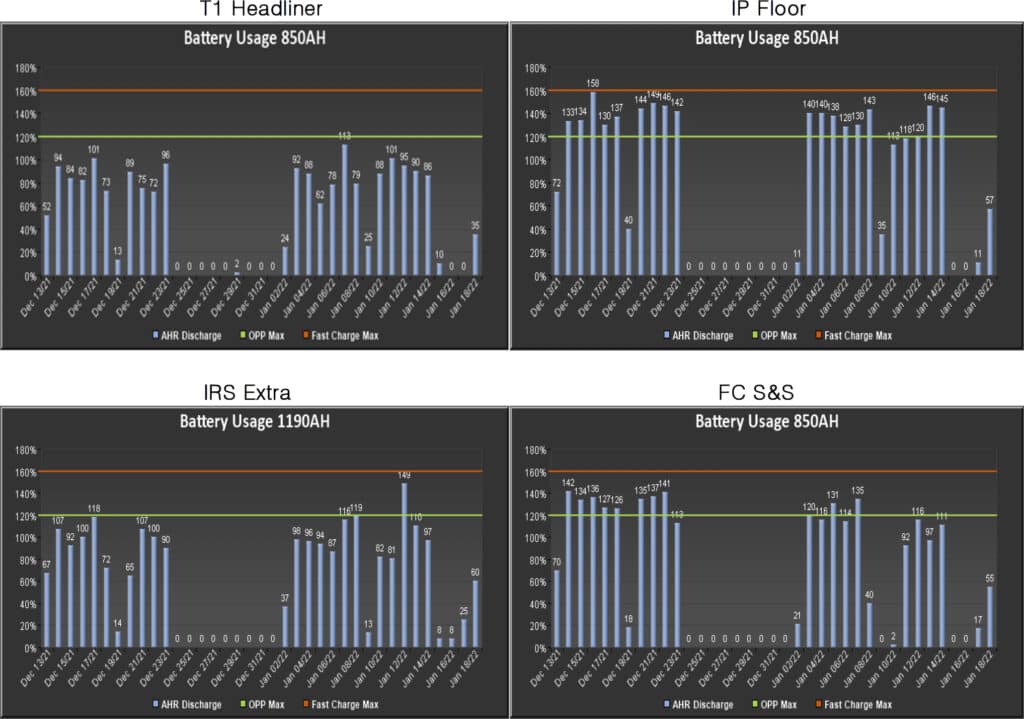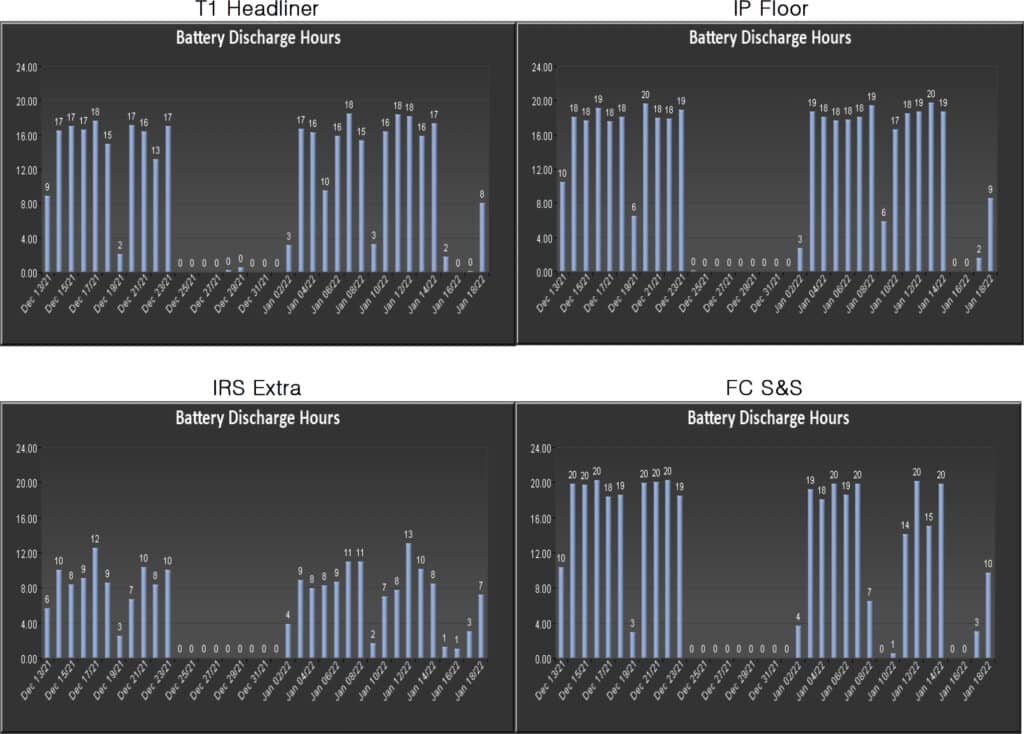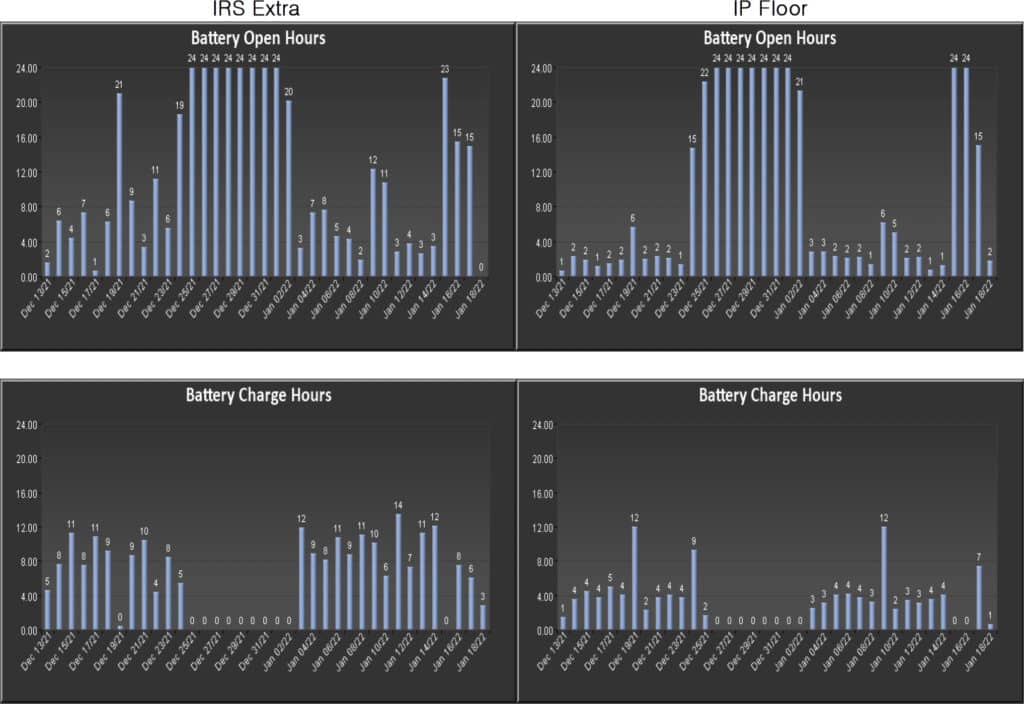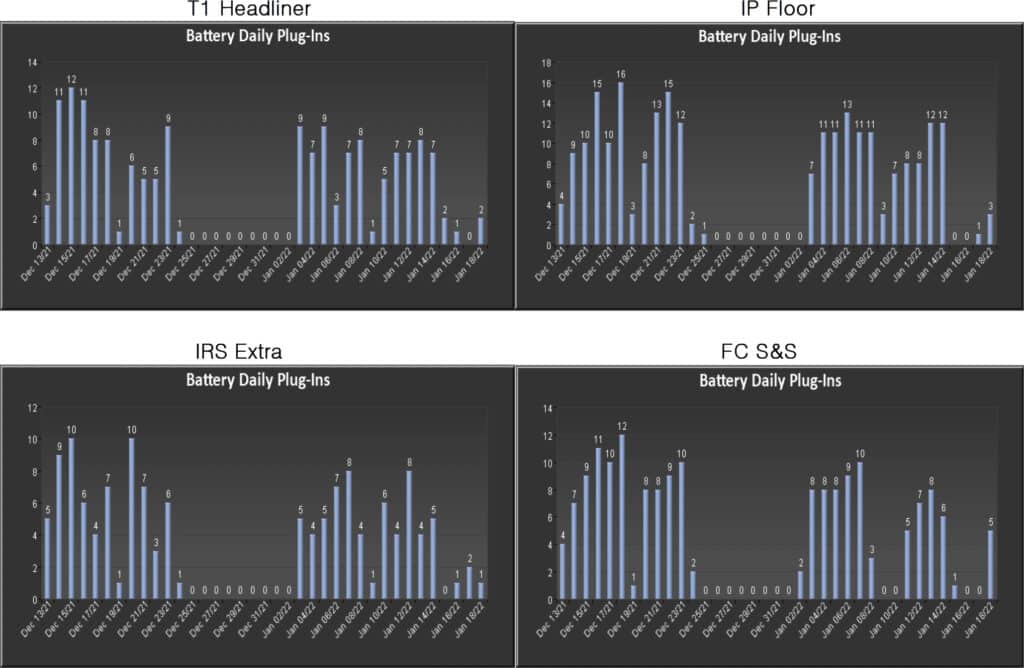Forklift power study was performed at the Android location at 2919 E Division Arlington, TX. to analyze battery charging and discharging patterns and its effects on life span. Study was conducted from 12/13/21 through 1/17/22.
Battery Usage (Throughput)
The following graphs show daily battery usage. Usage of 80% to 100% indicate an opportunity charge application. 120% to 160% indicate a fast charge application.
T1 Headliner and IRS Extra show to be within the limits of opportunity charge except for Jan 12th was an extremely heavy day at 149%.
IP Floor and FC S&S are above 120% but below 160% putting them both within fast charge. If they were to exceed the 160% mark, swapping batteries if typically recommended.

Discharge Hours
Single shift application involves 6 hours of cumulative usage of equipment. Over 6 and less than 12 hours a day (2 shifts) is ideal for opportunity charge. More than 12 but less than 18 hours a day fast charge is ideal. If an application presents more than that indicated hours, it is recommended to consider rotating equipment, adding equipment, or storing extra batteries to change out supplying enough power to run the fork trucks.
T1 Headliner, IP Floor, FC S&S show discharge hours between 18-20 hours. This does not leave enough time to fully charge the batteries once per day as required for opportunity or an opportunity/fast charge hybrid. The output of the current Ametek chargers indicate this is a hybrid.
IRS Extra shows much lower discharge hours than the others 3 examples. This would indicate that there should be plenty of time for the lift to be on charge keeping the SOC (state of charge) at a much higher level.

Open Hours & Charge Time
Idle time plus charge time is to be considered available time to recharge. The examples used are IRS Extra (least amount of usage) and IP Floor (the most usage).
IRS Extra has a sufficient amount of available time to be able to charge throughout the day to keep the SOC higher and need less time to get to a full charge each day.
IP Floor has much less combined charge time throughout the day and even less idle time. In a lead acid application, swapping batteries or adding an additional lift should be considered.

Daily Plug-ins
Graphs below show a charge pattern based on necessity to make batteries last the whole shift. Consistent connections to recharge during break and lunch should help avoid low voltage which introduces heat in battery and its premature catastrophic failure.
For a 24-hour operation, there should be 11-13 plug-ins per day average. As you can see below, plug-ins during the day are sporadic. Most days are an average of 8 plug-ins, but IP Floor has some days that show 15-16. This is due to the operator having to plug in as a necessity to make it through the day.

Areas of Improvement:
- Charging
Data shows that there is an insufficient number of plug-ins throughout the day. These habits normally form when the battery is new, and the operator sees a strong battery that last the entire day. Failure to plug in on breaks, lunches and between shifts cause excessive heat which leads to deterioration of lead plates and premature failure of the battery. - Low Voltage
Lack of consistent charging will keep batteries at a low voltage. Effects of this will transfer to the truck components as elevated temperatures will cause failures. Same is the case inside of the battery. High temperatures will diminish battery lift. Low voltage also leads to failed drive motors, hydraulic pumps, and electronic parts on the lift. - Charger to Battery Ratio
Each battery must have its own charger to ensure weekly equalization charges are not missed, and daily compete charges are occurring. Typically, the most utilized trucks will get charged more than the rest causing both groups to fail due to heat or sulfation accordingly.
Conclusion:
- Lithium Batteries/Chargers
It is our conclusion that Lithium-Ion batteries would be a good fit in this application. The small windows of time that are allowed for charging gives lithium an advantage over their lead acid counterpart. Lithium’s ability to charge at a 50% (or higher) start rate means that most batteries can fully charge from a 20% depth of discharge to a full charge within 2 hours. Another benefit is there is no need to water, keeping maintenance to a minimum.